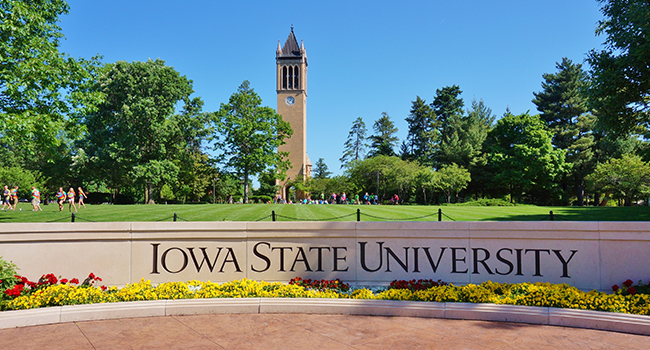
Iowa State Ramps Up Security Following Murder of Student
According to ISU Department of Public Safety head Michael R. Newton, the campus has responded by increasing opportunities for safety-related training and education, as well as expanding the hours that “safe rides” – free rides from public safety escorts – are offered.
- By Jessica Davis
- November 27, 2018
Iowa State University campus police have received many questions about campus security and requests from students and their parents for improvements like better lighting, self-defense training and earlier “safe rides” around campus following the murder of an ISU student.
Celia Barquin Arozamena, an ISU senior, international student and accomplished golfer, was found dead in Ames, Iowa, in September. A suspect was arrested at a nearby homeless encampment and has been charged with first-degree murder.
According to ISU Department of Public Safety head Michael R. Newton, the campus has responded by increasing opportunities for safety-related training and education, as well as expanding the hours that “safe rides” – free rides from public safety escorts – are offered.
“After the death of Celia, we saw a huge increase and spike for self-defense training,” Newton said. The department’s training program staff has added an additional full-time employee for a total of two.
“We were able to receive funding to fund a full-time person who is working strictly with minority students and international students so that we can bridge that gap and do some more education and safety training in that area,” Newton said.
ISU’s Department of Public Safety has also reviewed its emergency notification system and exterior video surveillance layout.
“And after Celia’s death, it became really important to talk about the homeless issue near college campuses,” Newton said.
ISU has historically been proactive in working to move homeless encampments off campus, connect displaced people with assistance and resources and partner with housing projects committed to those efforts. After Arozamena’s murder, the university has increased these efforts and improved collaboration with the City of Ames.
“We are reassigning officers to bike and foot patrol, we’re trying to be more visible on campus,” Newton said. “It’s hard though, with 36,000 students and there’s 40 of us.”
According to Newton, the university is increasing the number of its committees and groups dedicated to security and safety, and a new student group now meets biweekly with department administrators.
About the Author
Jessica Davis is the Associate Content Editor for 1105 Media.